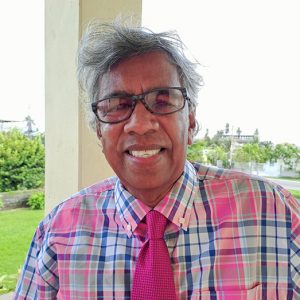THIS is my fourth installment in the analysis of social classes in Guyana beginning from the period of Forbes Burnham’s totalitarian domination.
The three parts are in the November 22 and 23 and December 29 editions of the Guyana Chronicle. In part 2, I made the following observation: “There have been four periods that saw profound changes in Guyana’s class structure. 1- Burnhamite state hegemony. 2 Hoytean capitalist restoration. 3- Jaganite elevation of the peasantry. 4- petro-dollar economy.”
In part 3, I looked at the first period listed above. Today, I will examine the dialectics of class changes for the period 1970-1990. After the 1968 rigged election when the PNC formed the government without its 1964 coalition partner, the United Force, the political economy of Guyana underwent profound transformation, resulting in sociological features not seen in the British Caribbean before.
Forbes Burnham pursued the path of “socialist” transformation in which novel economic directions undermined Guyana’s traditional class structure. Burnham brought the economy under the control of the state so by the time the new president succeeded Burnham after the latter’s death in 1985, between 80 to 90 per cent of the economy was under complete state hegemony.
A body named the External Trade Bureau regulated trade thereby guillotining the urban-based petty bourgeoisie. The Acquisition of Land Act and the Land to the Tiller Act severely reduced the peasantry particular the Kulak stratum of the peasantry. The politicisation of the totality of the public sector including the education system from primary to tertiary led to the mass exodus of the professional section of the middle class.
The final nail in the coffin for the middle class was the assassination of Walter Rodney.
The landscape of Guyana’s class structure from 1976 when nationalisation took hold of the country and economics and politics were transported from a capitalist system in the colonial period to an authoritarian, state-dominated structure looked like this
1- The disappearance of the foreign bourgeoisie. Foreign companies engaged in manufacturing and limited industrialisation were consumed under nationalisation and thus left the country. Guyana had not even a small capitalist class left except one huge, local manufacturing company, Banks DIH.
2- The extreme miniaturisation of the petty bourgeois. The Portuguese petty bourgeoisie that dominated the import-export trade, other commercial activities and banking and finance were substantially reduced due the mass exodus of the Portuguese out of Guyana after the acrimonious split between their United Force (UF) and the PNC.
The External Trade Bureau literally devastated Portuguese commerce. Even if some Portuguese had intended to stay in Guyana, the arrest of the UF leader, Peter D’Aguiar over the Rupununi uprising and the suspicion by the government that sections of the Portuguese petty bourgeoisie were involved hastened the migration of the Portuguese. What was left of the Portuguese presence were the sewing machine company, Singers, insurance firms and the major Portuguese family business named John Fernandes Ltd.
3 -The decrease of the peasantry and Kulak class and the expansion of the rural, Indian proletariat. Because of state control of agriculture, very wealthy rural landowners and rich rice farmers migrated out of Guyana. In the 1980s, these people still had huge amount of lands they owned but they were left in disuse. Because of nationalisation of the sugar industry, there was an expansion of the rural proletariat because sugar workers had nowhere to go and had to preserve their existence by staying in Guyana.
The government ushered in a large agricultural scheme named the MMA and that together with the Demerara Harbour Bridge and the Canje Bridge did allow for the preservation of the peasantry but the numbers were enormously reduced because of state ownership of the economy. A creation of a ubiquitous coop system, the establishment of the Mortgage Finance Bank and the Co-op bank helped to expand the rural, African peasantry.
4- The diminishing urban middle class. These were the descendants of the house slave system and opposed Burnham after he descended into the abyss of totalitarianism. With the assassination of Rodney, they joined the foreign bourgeoisie, the petty bourgeoisie and the Kulak class and left Guyana.
5 -Expansion of the urban proletariat. The gargantuan expansion of the state-owned economy saw a huge increase in the urban proletariat who also found ready employment in the militarisation of the society.
6 -The birth of a statist middle class. Critics of Burnham called state managers, a state bourgeoisie. This was misleading. The bourgeoisie is a capitalist class that owns property. The vast school of state managers owned nothing. They managed the state assets.
7 -Finally, the breakdown of economy and politics produced a rampaging lumpen proletariat that terrorized Guyana in the late 70s and early 80s in a crime spree referred to as kick-down-the-door banditry.



.jpg)











